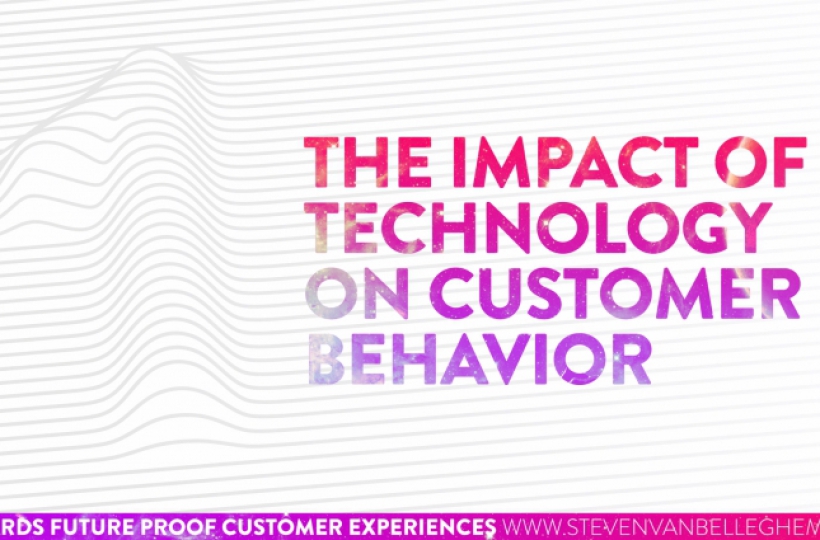4 different ways in which technology affects customer expectations


1.Technology is becoming invisible
A few decades ago, technology was very visible… and very big. You had to be quite technical to work with it all. People often ask me how society will be able to keep up with current technological developments. Well, I think it is much easier now than it was 30 years ago. For those of you who can still remember an MS-DOS interface… That interface was a whole lot more difficult for 55-year-olds to work with than what we are used to on our smartphones today.
Nowadays technology is becoming invisible. Sensors, cameras and data are the ingredients of the invisible forces that automate our lives. When you get out of your Uber car, you have paid for your ride without doing anything. It just happens. Payment has become invisible.
2. Technology makes the total experience better
In the next few years, we can expect better service at all levels, thanks to the improved performance of technology. One major evolution will undoubtedly be that services will be more personalised.
However, probably the most important development will be mixed reality. In the past, the focus was completely on the offline customer experience. Then there was a major shift towards the digital customer experience and communication. Today and tomorrow there is a mixed reality environment. My book ‘When Digital Becomes Human’ offers a framework for the digital-human relationship.
The strong rise of virtual and augmented reality will give a new dimension to the mixed reality approach.
3. Technology democratises markets
Technology is becoming more and more accessible. We recently visited SAM Labs in London, a company founded by Belgian Joachim Horn (24). Joachim’s dream is to make engineering skills accessible to anyone with a little creativity. He developed very simple sensors, buttons and other great applications for this. You can connect these physical modules with the simplest digital interface ever. This allows everyone to discover with great ease what the Internet of Things is really about. The great thing is that these modules are designed for education and for kids. They teach kids to work with technology from a very young age, so they democratise the possibilities technology has to offer.
Tech Shop is another example. Tech Shop was established in San Francisco. It is a large room with all the equipment you need to make a product: from woodworking tools to 3D printers and laser cutters. For $150 a month, you get unlimited access to these devices. Tech Shop also teaches their members to work with all the different devices. It is like a fitness centre, but with technical equipment and experts. Many young entrepreneurs started to make their dreams come true at Tech Shop. The impact on society is huge. The combined value of all the companies that emerged from Tech Shop is now more than 12 billion dollars. It is democratising entrepreneurship. Thanks to these new technological hubs, just about anyone can get started with an idea. This type of lab also gives companies more opportunities to experiment than before, which makes new, great concepts more likely for their customers.
4. Technology makes just about everything transparent
The popularity and use of block chains is on the rise. A block chain is a technology that makes transactions fully transparent. If someone sells a diamond via a block chain, you can see where the diamond was made and who the previous owners were. The system keeps track of all transactions, which increases transparency. Block chains are just one example. Snapchat is probably the social platform that offers most transparency of what is going on with each of us. Snapchat shares no links, no third-party content: you can only share what you have experienced yourself. This makes it a great deal more transparent than Facebook or Instagram. Facebook Live is another example. Because every person in the world can be regarded as a possible camera crew capable of broadcasting live events, everything that is happening in the world becomes more transparent. In the past, we liked to share a few photos or a short video of an event here and there. Today’s events are broadcast on Facebook. Companies can use this technology as tools to tell their own story in a way that is more transparent than ever, although they do make it more difficult to hide behind a facade.
Towards a future-proof customer strategy
These technological developments have a major impact on the relationship with your customer. The goal is to build a customer strategy that is future-proof. If you want more information about the impact of these four technological developments, make sure to read the following slides.